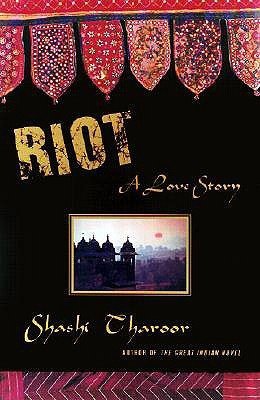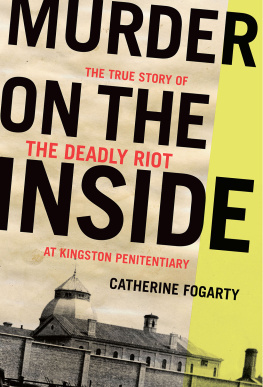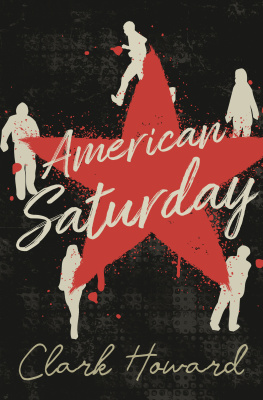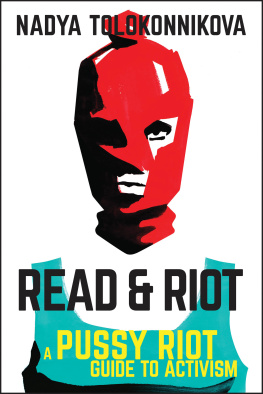MURDER AT THE SLEEPY LAGOON

2003
The University of North Carolina Press
All rights reserved
Set in Charter, Eagle, and Meta types by Tseng Information Systems, Inc.
Manufactured in the United States of America
The paper in this book meets the guidelines for permanence and durability of the Committee on Production Guidelines for Book Longevity of the Council on Library Resources.
Library of Congress
Cataloging-in-Publication Data
Pagn, Eduardo Obregn, 1960
Murder at the Sleepy Lagoon : Zoot suits,
race, and riot in wartime L.A. /
by Eduardo Obregn Pagn.
p. cm.
Includes bibliographical references (p. ) and index.
ISBN 0-8078-2826-2 (alk. paper) ISBN 0-8078-5494-8 (paper : alk. paper)
1. Mexican AmericansCaliforniaLos AngelesSocial conditions20th century. 2. Mexican AmericansLegal status, laws, etc.CaliforniaLos AngelesHistory 20th century. 3. Sleepy Lagoon Trial, Los Angeles, 19421943. 4. Zoot Suit Riots, Los Angeles, Calif., 1943. 5. Discrimination in criminal justice administration CaliforniaLos AngelesHistory20th century. 6. ViolenceCaliforniaLos AngelesHistory20th century. 7. Los Angeles (Calif.)Race relations. 8. Los Angeles (Calif.)Social conditions20th century. 9. World War, 19391945CaliforniaLos Angeles. 10. World War, 19391945Social aspects. I. Title.
F869.L89M566 2003
979.494052dc21 2003048891
A portion of this work appeared earlier, in somewhat different form, as Los Angeles GeoPolitics and the Zoot-Suit Riot, 1943, Journal of Social Science History 24:1 (Spring 2000): 22356, and is reprinted here with permission.
cloth 07 06 05 04 03 5 4 3 2 1
paper 07 06 05 04 03 5 4 3 2 1
FOR JORDAN, LARA, STEPHEN, AND DANIEL

Contents
Illustrations
Manuel Ruz Jr. and the Coordinating Council for Latin American Youth
Young women from 38th Street after the police dragnet
Dora Barrios, Frances Silva, and Lorena Encinas
Arraignment of young men from 38th Street
Eleanor Delgadillo Coronado
Delia Parra
Young men with duck tail hair and drapes
La Dora, El Paul, La Lupe, El Chubby
Variation of the drape shape
Drape worn by jazz aficionados
The drape style popular among Mexican Americans in Los Angeles
Rioting military men and civilians looking for zoot suiters
Black and Mexican American youths from Watts jailed during the riot
Mayor Bowron meeting with military and police leaders
Young men beaten during the riot
Tables and Maps
TABLES
1. Population of Los Angeles, 19001940
2. Foreign-Born White Residents of Los Angeles by Country of Origin, 19001940
3. Demographic Profiles of Chavez Ravine, Alpine Street, and Temple Street Neighborhoods, 1940
4. Foreign-Born Residents of Chavez Ravine, Alpine Street, and Temple Street Neighborhoods by Country of Origin, 1940
MAPS
1. The Williams Ranch and the Sleepy Lagoon reservoir
2. The bunkhouse compound at the Williams Ranch
3. The neighborhoods of Chavez Ravine, Alpine Street, and Temple Street in downtown Los Angeles, 1943
4. The progress of rioting

Acknowledgments
This work could not have reached completion without the financial assistance and support of the Hispanic Scholarship Fund, the Princeton University Department of History, Dean Eugene Lowe and the Princeton University Office of the Dean of Students, Dean David Redman and the Princeton University Graduate College, the Princeton Society of Fellows of the Woodrow Wilson Foundation, the Association of Princeton Graduate Alumni, the Minority Academic Careers Program of the New Jersey Department of Higher Education, the National Endowment for the Humanities Fellowship for College Teachers and Independent Scholars FB 3524198, the Dean of the Faculty at Williams College, the Center for Humanities at Wesleyan University, and the Center for U.S.-Mexican Studies at the University of California, San Diego.
I thank the many librarians who have generously offered their knowledge and assistance: Emily Belcher, Anne Caiger, Richard Chabran, Sarah Cooper, Pam Dunn, Linda Long, Dan Luckenbill, Donna McLish, Octavio Olvera, Dace Taube, Roberto G. Trujillo, Mary Tyler, and Yolanda Retter Vargas. I have been fortunate to work with students and others who have shared an excitement about the topic and period and provided valuable support and research assistance: Judith Burchard, Yolanda Davila, Felipe Prez, and Christopher Wells. Desiree Garca, Mylene Moreno, Joseph Tovares, and the rest of the Zoot Suit Riot project for the PBS series The American Experience were especially helpful in collaborating with me and in sharing their research. I am particularly indebted to the historical actors and their families whose stories I attempt to tell, who welcomed me into their homes, took the time to be interviewed, read and commented on drafts of this manuscript, provided assistance, or allowed access to personal papers and documents: Socorro Daz Blanchard, Lino Daz, Ted Encinas, Lupe Leyvas, Rudy Leyvas, Alice McGrath, Theresa D. Torres, Henry Ynostroza, and Mary Jane Zamora.
I am grateful to the many colleagues who have generously offered their time, insights, suggestions, and criticism on various drafts or portions of this work: Jane Aiken, Peter Andreas, Elaine M. Beretz, Albert Camarillo, Leonard Dinnerstein, John Dwyer, Edward Escobar, Elizabeth Escobedo, Desiree Garca, Ignacio Garca, Mario Garca, Karen H. Gardner, Susan Green, Michael Hall, Gary Hewitt, Meredith Hindley, Walter Johnson, Karen Eileen Kampwirth, Steven Kantrowitz, Ben Labaree, Daniel Liljenquist, Ruth Liljenquist, Jan Logan, Kenneth Maffitt, Lisa Magaa, Mauricio Mazn, Karen Merrill, Joseph Neville, Margarita Obregn Pagn, Nell Irvin Painter, Keith Pezzoli, Jerry Podair, Catherine Ramrez, Daniel Rodgers, Renee Romano, Ricardo Romo, Joel Schwartz, Howard Shorr, Donald Stokes, Julia J. Thompson, Joseph Tovares, Elizabeth Traube, Richard Ulman, Ulrik Vangstrup, Eric Van Young, Gareth Williams, K. Scott Wong, Russell Wyland, and Henry Yu. Lew Bateman, Chuck Grench, Ruth Homrighaus, and Amanda McMillan were encouraging throughout the manuscript review, and Matt Garca, David Montejano, and the anonymous readers for the University of North Carolina Press provided invaluable comments and criticisms. Finally, I can never express enough gratitude to Margarita Obregn Pagn, Ruth Liljenquist, and Nell Painter for their rigorous but unfailing support throughout this project. Con safos.
The views expressed in this book are those of the author and do not necessarily reflect the views of the National Endowment for the Humanities or of the authors colleagues at the Endowment, and endorsement by the federal government should not be assumed.
MURDER AT THE SLEEPY LAGOON

Prologue: The Sleepy Lagoon Mystery
Dies irae, dies illa calamitatis et miseriae; dies magna et amara valde.
Day of wrath, this day of calamity and misery; a great and bitter day.
The blows cracked hard against his head and body, bruising him like someone had picked up a two-by-four and flailed against him mercilessly. Twenty-two-year-old Jos Daz tried to duck under his lean arms to shield himself from the punishing beating, but he could feel his strength slipping away. He struggled to defend himself, punching into the dark night at the men who surrounded him, but his aim was bad. Fear surging through his mind caused him to swing wildly, and he was almost too drunk to keep his balance. He hit someone, though, three or four times, hard enough to skin his knuckles and break his finger.
Next page











